It seems like a long time ago since I took the photo below. This busy little fellow has probably been working all summer - at least he gets outdoors! Not unlike my black-and-yellow friend from the picture, I have been busily revisiting a sample of tea kindly provided by Mattcha of his eponymous blog, which is one of my regular favourite reads.
Perhaps to be expected give the beautiful aesthetic appeal of his blog, Matt's samples were some of the prettiest I have yet received.
These little parcels travelled across the globe, from South Korea to Blighty. I haven't yet asked my wife to translate the wrappers, so do please let me know if you recognise the text...
I suspected that this sample might be the same tea as a xiaobing I had bought some time ago, and which I had forgotten about, having neglected to try it. I usually espouse the principle of buying samples first before ordering whole cakes, but samples weren't available in this case (I think it came from Yunnan Sourcing) and the Douji brand from the Yiwuzhengshan Company is usually a safe bet.
This tea is simply labelled "Yiwushan Cha".
This tea is simply labelled "Yiwushan Cha".
Shown below, Matt's generous sample, and the original bing, for comparison. Matt has sinced confirmed that this is the same tea...
The leaves are mostly large fragments, and the aroma is sweet if a little quiet.
The yellow colour of the soup (pictured below) makes me happy. I haven't yet seen a Douji cake tweaked into orangeness, and this is no exception. The aroma in the wenxiangbei [aroma cup] is rich and low - that basic "tea" aroma that hints at potential complexity.
First impressions upon tasting are good: this is an energetic tea, causing vibrant sensations where it first touches the tongue and the lips. Like the aroma, its flavour is solid and low, with plenty of tobacco.
Just one cup gives me a buzzing head - it is almost too potent, luxuriously enough. A basic "tea" flavour is present, and more than a hint of some Assam-like character can be discerned. Turning out the wet leaves, a distinct red tinge to a portion of the blend explains this semi-hongcha nature.
Just one cup gives me a buzzing head - it is almost too potent, luxuriously enough. A basic "tea" flavour is present, and more than a hint of some Assam-like character can be discerned. Turning out the wet leaves, a distinct red tinge to a portion of the blend explains this semi-hongcha nature.
I liked it, and the 200g bing was apparently just $16, according to my records. It didn't thrill me such that I would actively pursue more of this tea, but I am happy to have tried it. While it does not live up to the complex beauty of its elder sibling, the 2006 Douji "Daye Qingbing" [big-leaf green-cake], it is the best of the 2007 Douji cakes that I have encountered.
Thanks again to Matt for his generosity.
Thanks again to Matt for his generosity.



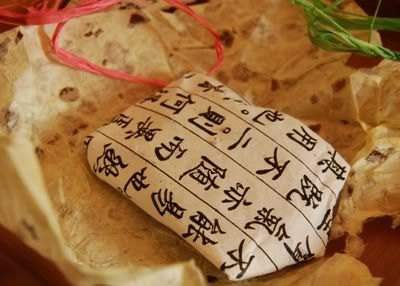
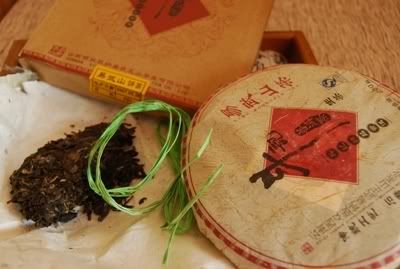
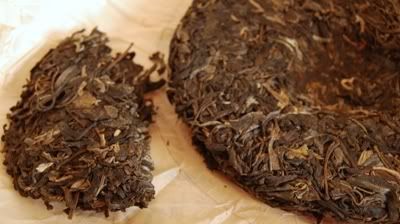
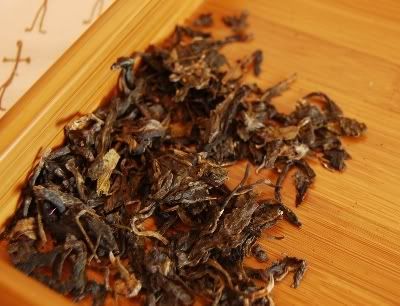

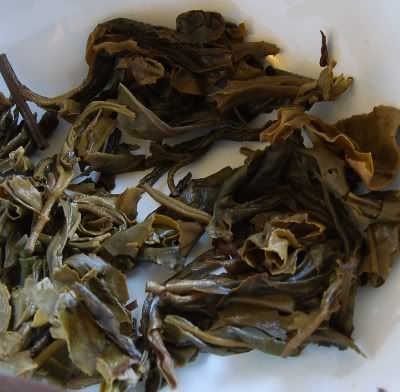
The script is one of the most famous in Korea. It explains how the written Korean language can be used instead of Chinese.
ReplyDeleteGlad you are enjoying the experience with this tea.
One also thought this tea's energy was quite powerful.
Peace
Dear Matt,
ReplyDeleteThanks for the extra information - just out of interest, what is the name of the script?
Toodlepip,
Hobbes
Hobbes,
ReplyDeleteThe script is named Hunminjeongeum.
Check out this link...
http://en.wikipedia.org/wiki/Hunmin_Jeongeum
Peace
Well that was a real education, thank you very much. What a fine choice for tea wrapping!
ReplyDeleteToodlepip,
Hobbes